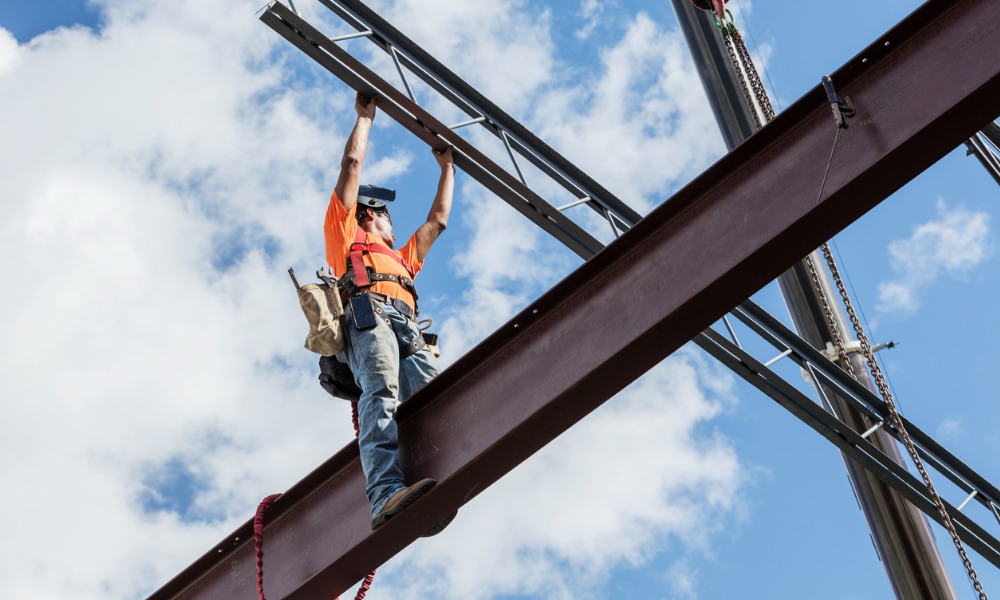Investigation reveals fall protection devices removed too early from construction site

Quebec’s workplace safety regulator released a report into a fatal incident that took place earlier this year and it contains crucial lessons for the construction industry, and any sector in which working-at-heights is part of the job.
On February 13, 2023, a carpenter from Construction Cordero Inc. in Laval died after falling several metres. On Thursday, the Commission des normes, de l'équité, de la santé et de la sécurité du travail (CNESST) released the findings of its thorough investigation into this incident and sent the report to Canadian Occupational Safety.
Timeline of the accident
"On the day of the accident, the carpenter was removing the canvases installed around the perimeter of a building under construction, starting from the seventh floor," reports CNESST. "Later, the carpenter went down to the sixth floor to loosen one of the canvases from the formwork elements. As the formwork was being removed, the carpenter fell into an opening in the floor, which had been made to allow the removal of the formwork elements.”
He fell six stories and first responders pronounced him dead at the scene. This grim sequence of events underscores the importance of strict adherence to safety protocols on construction sites, particularly those involving work at heights.
Causes of the accident
CNESST's investigation revealed two primary causes behind this tragic accident:
"While unshackling the canvas, the carpenter fell into a 61 cm by 150 cm opening in the cantilevered floor of the building, which had many obstacles, and free-fell six stories," notes CNESST. It found fall protection devices were removed from sections of the formwork before the removal of tarps was completed, which exposed workers to falling hazard. "The management of health and safety during the winter period was deficient,” says CNESST.
It suspended work on several floors of the construction site and imposed strict safety measures to protect workers.
Preventing future accidents
"To prevent accidents related to falls from heights, there are solutions," emphasizes CNESST. "These include planning work to limit activities that require work at heights, identifying and analyzing situations where workers may be exposed to a danger of falling from heights, and implementing preventive measures to control the risk of falls by prioritizing the installation of passive systems, such as guardrails, that do not require the worker to wear personal protective equipment against falls."
It is crucial for employers and workers alike to recognize their responsibilities in maintaining a safe work environment. "By law, employers are required to take the necessary measures to protect the health, safety, and physical well-being of their workers," CNESST states. "Workers must work with the employer to identify hazards and put in place the means to eliminate or control them."
Follow-up actions
CNESST is committed to ensuring that the lessons learned from this tragedy are shared widely within the construction industry. "The CNESST will forward the conclusions of its investigation to various industry associations, training institutions, and prevention mutuals to raise awareness and promote safety among workers," assures CNESST.
The tragic loss of a carpenter's life serves as a stark reminder of the importance of vigilance and adherence to safety protocols, particularly when working at heights. Mandatory working-at-heights training has been shown to reduce injuries.
As the industry reflects on this unfortunate incident, it is hoped that collective efforts will continue to enhance workplace safety and prevent such heart-wrenching accidents in the future.





